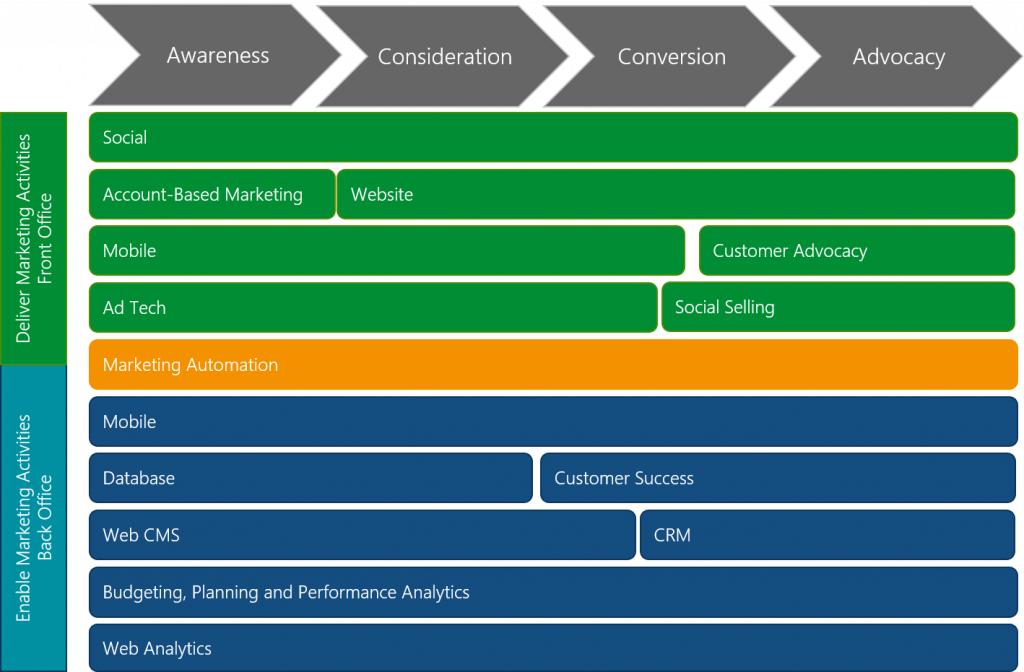At Flock we are often called upon to create Agile Marketing organisations. We’ve written previously about Agile and the benefits it can bring to marketers.
Flock helps clients build the marketing organisation design, the skills, the culture, the processes, the governance and KPI’s that drive agility. An important part of enabling an Agile Marketing organisation is technology.
This short blog looks at the technology that a company needs to consider to become more Agile. The technology impacts of a shift to agile are very often overlooked, or the transformation underfunded. This is often because, within marketing, there is a lack of understanding of the role for technology.
Any marketer talking Agile Marketing, thinking Agile Marketing, doing Agile Marketing, or considering Agile Marketing simply MUST also ensure they have a good understanding of the technology that powers it. Either by ensuring expertise sits in the marketing team, or “renting it” from consultancies. Though we are a Consultancy and stand to benefit if everyone used us, we’d suggest that an advertiser of scale should try and get a sustainable internal resource!
So, agile marketing technology is important but there is so much of it, where should you start? And, it all overlaps?! How should a marketer think about Agile Marketing Technology?
Rather than talking about vendors or individual types of tech, let’s look at where technology may enable an Agile Marketing Team and general types of marketing technology:
| Workflow | project planners, project boards, approval technologies, ticket management, etc. |
| Knowledge management | data management platforms, business intelligence, research hubs, wikis, collaboration technology |
| Resource management | internal and external resource management, appraisal tools, project boards, ticket management, team collaboration etc. |
| Asset creation | stock imagery, design, editing, photography & video, language translation, collaboration, dynamic content optimisation, approval |
| Campaign management | approvals, integration, testing, global sharing, translation & transcreation |
| Publishing | web & app technologies, campaign management platforms, dynamic experience management, A/B testing, social listening, publishing and paid management, programmatic, media technologies (brand safety, viewability, DSP’s, bid management etc), influencer management, CRM tools, shopper marketing tools, retail POS management tools, ecommerce management tools |
| Asset management | digital asset management, rights management, talent payments, product information databases |
| Reporting & ROI | audit & verification, SEO, analytics, CRM tools, business intelligence, modelling and attribution |
When you consider the different technologies, you will see what a complex mesh is created as so many technologies overlap. Some technologies play well together, and some don’t. It is this dynamic that requires some good “architectural engineering” to structure a plan.
So how do you build a good architecture?
1) Start with the consumer and the future. What do they need from your marketing team? What? How much? What channels? What formats?
2) Distil the high-level processes. What are the major processes? Who does what, and passes what to whom? Don’t forget to include working with agencies, media owners, third parties like influencers others in this process mapping.
3) Get the right KPIs and reporting. What do you need to measure? How? How often, what formats?
4) Use a customer journey to help create the front office (tech that touches the consumer) and back office (internal enabling technology) building blocks of your tech stack. This will only be a high level and will vendor agnostic at this stage.

5) Prioritise the technology of impact and the efficiency they offer.
6) Create high-level specifications for technologies and the business case.
7) Test and evaluate technologies in a structured fashion.
8) Refine specifications and either roll out tests or conduct an RFP (dependent on tech type).
9) Formal evaluation of individual tech, and full tech stack.
10) Start the process again, always looking three years ahead.
So, as you can see the shift to Agile Marketing requires technologies to enable it. It can seem daunting for the non-tech literate, but by breaking down the projects into manageable chunks (sprints!) you can rapidly create and evolve your Marketing technology ecosystem.
If you would like to see some of this process in action and cases from Ford, VW, British American Tobacco, Ebay, Metro Bank and others then don’t hesitate to let us know.



